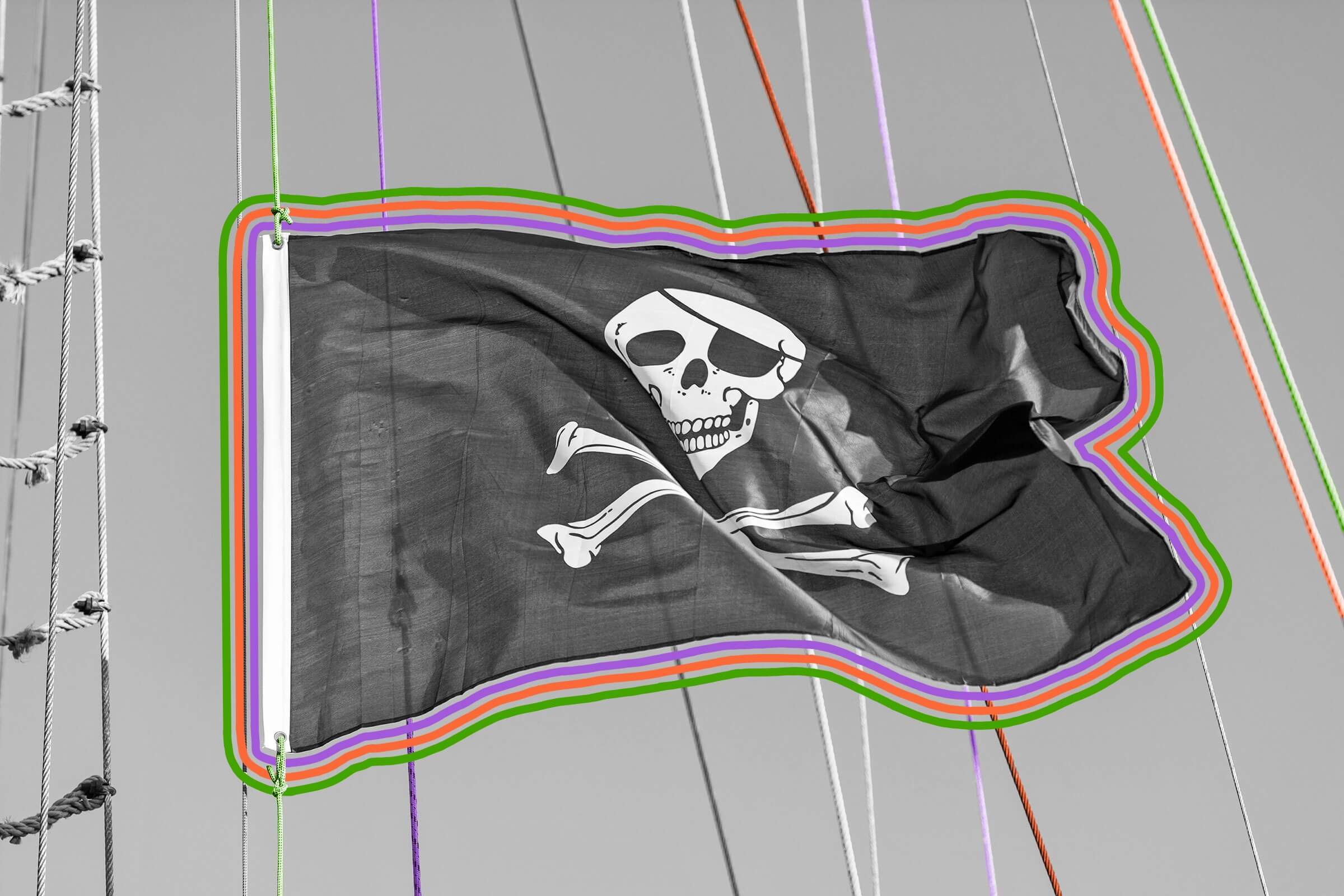
Only one ship of the U.S. Navy is authorized to fly the Jolly Roger.
There are plenty of ships in the U.S. Navy (291 of them, to be precise), but only one has the curious distinction of flying the Jolly Roger — the ominous flag typically associated with pirates. Although a skull and crossbones is the most common adornment, lawless seamen during the golden age of piracy (1650-1720) flew many grisly symbols, including skeletons but also bleeding hearts and sharp weapons. After closing in on a ship, pirates hoisted the Jolly Roger at the last minute, and though designs varied from ship to ship, the message was clear — surrender or die.
But for the U.S. destroyer USS Kidd, flying the Jolly Roger is less about striking fear into the hearts of its enemies than it is an 80-year-long tradition. The ship honors Rear Admiral Isaac C. Kidd, who earned the nickname “Cap” while attending the U.S. Naval Academy due to his name’s similarity to the infamous 17th-century pirate Captain Kidd. During the Japanese attack on Pearl Harbor in 1941, Kidd was killed aboard the USS Arizona. Within two years, a Fletcher-class destroyer bearing his name sailed the Pacific. The ship’s crew kept the nickname alive by adopting the Jolly Roger and calling themselves “the Pirates of the Pacific,” though their “booty” often involved retrieving downed Allied fighter pilots. Today’s USS Kidd, commissioned in 2007, is actually the third ship to bear the name and the third to hoist the fearful flag of a bygone era.
The 1724 book A General History of the Pyrates, possibly written by Daniel Defoe, describes how Mediterranean pirates held a ladder over the side of the ship and told their Roman captives they were free to go if they could swim to shore. This is the first historical reference to something like the well-worn feature of pirate lore known as “walking the plank” — and it also probably never happened. Other than that colorful account, along with future embellishments by authors such as Robert Louis Stevenson and Howard Pyle, no direct historical account describes a process akin to “walking the plank.” During the golden age of piracy, punishment was usually more gruesome, and included lashing, marooning, or just being thrown overboard. Although the idea of “walking the plank” was likely too colorful for authors writing swashbuckling adventures to pass up, real-life pirates didn’t have such a flair for the theatrical.

